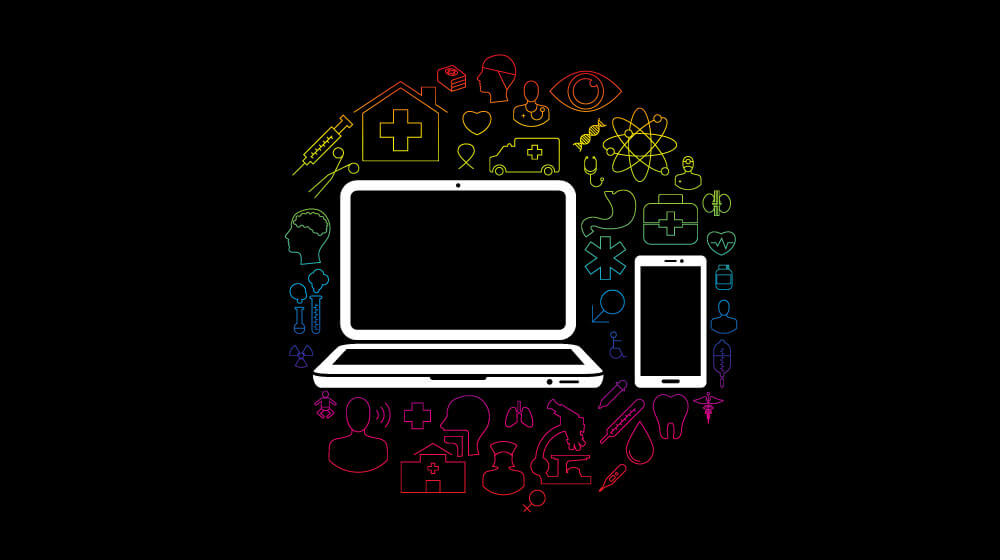Your potential patients are spending more time online than ever—and they’re doing it using new platforms, devices and types of interfaces that should affect where you spend your efforts.
In May 2015, Mary Meeker, a partner at Silicon Valley venture capital firm Kleiner Perkins Caufield and Byers, presented her annual “State of the Internet” report. Her epic deck of 196 slides covered a huge range of trends, but there are several key takeaways for healthcare marketers. Here’s what you need to know.
Think Mobile First
This is the one insight that drives everything else: Consumers now spend more time with mobile and tablet devices than with their desktops or laptops (slide 14).
We need to change our defaults. It’s time to start thinking about mobile first. If you’re talking about your site’s homepage layout, start by discussing the mobile experience. If you’re making edits to a service line page, preview the changes on your phone.
In doing that, what you experience may be a bit painful. As an industry, we’ve learned a lot in the last few years about creating responsive sites and working with mobile browsers. Even if you’re thinking “we already have a responsive site,” it may be time to think about how well that site is performing. There may be opportunities to improve everything from page load times to the hierarchy and readability of content on the page.
From a design perspective, touch user interfaces are now setting the standard for how we organize interactions. The flat design and outlined iconography of Apple’s iOS 7, Windows 7’s Metro design language, and, most recently, Google’s Material Design principles have all had a huge impact on the design of websites and online interactions beyond touch devices.
For more insight, as well as specific examples of mobile and social trends, watch Geonetric’s webinar on web design trends for healthcare.
Speak Where Others Listen
If you’re planning a marketing campaign, this shift toward mobile is even more critical. First off, Meeker reports that advertisers are still spending too much on print and TV, and not enough on internet and, especially, mobile (slide 16). Ad spend is still skewed to print media, while consumers are spending their time online.
If you want to put your ad money where the consumers are, Facebook, Twitter, Instagram, and Pinterest would be happy to help. The increasing range of direct response advertising formats on these social platforms (slide 21) provides compelling options for getting actionable messages in front of the right audience.
But, before you rush in, the cross-channel campaigns we’re launching for our healthcare clients show traffic driven by social media and ads is skewed even more strongly toward touch-based devices. If you’re not paying close attention to the mobile experience on your landing pages, you’re wasting money and missing out on a large part of your audience.
Expect Disruption
According to Meeker, healthcare has only been 25% impacted by the Internet (slide 8), lagging other areas of business that have already had to adapt. That leaves a lot of change ahead of us. Some of the most immediate shifts are already underway in new care delivery models, from connected health to retail approaches (slide 185).
Trends in healthcare payment driven by the Affordable Care Act (slides 102, 185), along with increased costs (slide 186) are leading toward more consumer spending on healthcare. As a category of personal spending, in fact, healthcare experienced the highest percentage growth (11%) of any consumer spending category in 2014 when compared to 2013 (slide 76). This choice represents both an opportunity for current providers, as well as a risk for disruption.
As consumers choose how to spend that money, their expectations are being set by experiences with other industries. For example, user-generated reviews, while not new, are playing a growing role in how consumers make purchasing decisions. Meeker calls out a 140% year-over-year increase in user reviews for Airbnb (slide 64). Last year, a Bright Local survey indicated that “88% of consumers trust online reviews as much as a personal recommendation.” It remains to be seen if that holds as true for a pediatrician as for a dry cleaner, but there is no doubt that the opinions and experiences shared by strangers are affecting consumers’ choices on a daily basis.
To learn more about promoting physicians in light of these trends, make sure to view our webinar on physician promotion.
Seize the Opportunity
This is really just the tip of the iceberg. These trends highlight not only opportunities to grow and expand, but also ways that we can better serve our patients and communities.


